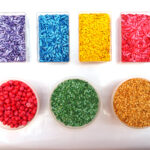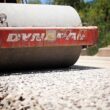In 2012, engineers at Boeing took an amusing yet ingenious approach to fine-tuning airplane internet: they filled a decommissioned airliner’s cabin with 20,000 pounds (9,000 kg) of potatoes. The goal? Improve and optimize in-flight Wi‑Fi performance—and somehow, those potatoes played a vital role.

🥔 Why Potatoes?
Airline cabins are dense, enclosed spaces, with hundreds of human bodies absorbing and reflecting radio-frequency signals—disrupting Wi‑Fi coverage. To reliably test network performance, engineers needed a static yet realistic proxy for passengers. A serendipitous tip from a Journal of Food Science paper on the dielectric (i.e., signal-interacting) properties of fruits and vegetables led them to potatoes. Thanks to their high water content and specific chemistry, potatoes mimic how human bodies interact with radio waves—without the movement, fatigue, or boredom of real people.
Project SPUDS
This initiative was humorously dubbed Project SPUDS—“Synthetic Personnel Using Dielectric Substitution.” Boeing packed the grounded aircraft’s seats with spud-filled sacks to map out Wi‑Fi coverage throughout the cabin. Using advanced signal-measurement tools and statistical analysis, the team could identify weak “dead zones” and hotspots without asking volunteers to sit motionless for hours.
What They Found & Why It Mattered
The potato-filled cabin experiments enabled Boeing to dramatically compress testing time—from more than two weeks to around just 10 hours—while still gathering highly accurate signal data.
Engineers learned exactly how signals propagated, reflected, and decayed across various seat rows. This was critical not just for enhancing passenger experience, but also to ensure that onboard Wi‑Fi wouldn’t interfere with sensitive avionics systems.
From Lab to Commercial Fleet
After refining antenna placement, router configurations, and power settings using potato proxies, Boeing rolled out the improvements to several of its airplane models—including the 747‑8, 777, and 787 Dreamliner. Many major airlines now offer more consistent and reliable in-flight Wi‑Fi thanks to this clever research method.
In addition, Boeing reportedly donated the potatoes to a local food bank after the tests—turning experimental spuds into a valuable community resource.
Why This Matters to Air Travelers Today
- Better Coverage: The insights gained from Project SPUDS helped reduce dead zones in cabins, particularly in middle or rear seats often plagued by poor reception.
- More Reliable Speeds: Fine-tuned signal distribution helps maintain bandwidth consistency—even when multiple passengers are uploading, streaming, or browsing.
- Enhanced Safety: Thorough interference testing reassures regulators that onboard wireless won’t compromise avionics systems.
So next time you’re streaming at 30,000 feet, don’t just thank Boeing’s engineers—throw a little gratitude at a humble potato too.


















